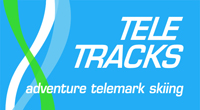Rottefella NTN Freeride Binding Review
The Rottefella NTN Freeride Binding
The NTN Revolution
Rottefella’s NTN (New Telemark Norm) has taken the telemark skiing World by storm. Although initially viewed by sceptics as expensive and almost unethical, it has truly become the norm, the industry standard. Rottefella have redefined and reset the bar.
Early NTN adopters were often jealously labeled cheaters, such is the difference in improved performance and ease of use. If you’re still debating the worthiness of the NTN system, read on…
I’ve been skiing NTN gear since 2013 and under no circumstances would I look back, here are the reasons why:
Performance
The NTN system has an alpine like performance in terms of precision, power and stability. Edge to edge precision is exceptional due to it’s lateral stability.

Stability
The NTN system has incredible lateral and fore-aft stability. I’ve witnessed this personally on numerous occasions during coaching clinics, those with NTN kit are far more likely to achieve challenging balance drills. In an alpine stance, I’ve never lost forward balance and I can ski almost as efficiently on my NTN gear in alpine as I can on my alpine gear.
Physical Efficiency
The increased precision and stability has great benefits for your legs. You fatigue less, so you can ski for longer. If you do get tired, just put your feet flat and alpine. My Dad is in his 60’s, he tele’s for 14 weeks a season and he estimates that NTN’s give him 20% more in terms of physical capacity.
Step-in, Step-out
The step-in step-out binding, once you’re used to it, is virtually as easy as an alpine setup to get on and off, save your back and the odd ego bruising stumble as you struggle to get your skis on…
Ski Brakes
Ski brakes mean no more clumsy leashes to trip you up, no more unwieldy balancing acts as you clip the leash to the boots, no more ski losses as the leash snaps and the brakes make carrying the skis a breeze!
Constant Flex Pattern
The NTN flex pattern is beautiful, there are no flat spots or elastic pressure points. In other words during the transition from flat foot to heel up, the binding pressure is constant, this makes controlling the lead change and pressuring the back foot far easier.

No More Left and Right Skis
Double the life of your skis! Since the binding sits flush on the ski, you no longer have a left and a right ski. This means you can swop the skis over periodically and keep the edges fresh, your big-toe edge wears far quicker than the little toe edge.
Release System
Save your knees, the binding releases laterally. Adjust the tension springs to control the ease of release. In an avalanche, the skis can come-off, which can save potential leg injury.
Touring Pivot Point
The NTN binding has a touring mode which moves the pivot point in front of the toe giving you a significantly longer stride. You’ll get up the hill quicker, using less energy.
One Binding for a Quiver of Skis
Put off by the price if you have multiple skis? Don’t be! You don’t need to buy a binding for each pair of skis in your quiver, just buy the base plate and heel piece for each ski, and swop the binding from ski to ski in a matter of minutes.
Negatives
Snow Packing
Like all other telemark bindings I’ve tried, you still get snow packing under the ball of the foot in deep wet snow conditions and if you ski a lot of switch.

Snow packing in wet snow conditions
Brakes
The brakes are hard to detach from each other when the skis are locked together. Granted it’s a small factor, but it’s slightly annoying all the same.
Crampons
As yet, Rottefella don’t have a crampon option for touring with this binding, I’ve heard rumours of third party companies manufacturing them. It’s a pretty important accessory if you tour at any time of the season but particularly in the spring.
Price
Compared to other bindings, the NTN can be expensive, however, if you’ve got two pairs of skis, it works out the most cost effective if you buy the plates to mount onto. You’ll also need an NTN boot, which does add to the cost.
it’s worth bearing in mind that with an NTN binding, you get a lot of engineering for your money compared to a simple cable binding. There are significant differences in performance and functionality between the two but the price difference doesn’t reflect this, NTN bindings are not a lot more expensive considering their features.
Look online and see how cheap the older 75mm binding and boot systems are, and ask yourself why? Supply and demand… if you’re a confirmed telemark skier it’s worth the investment.
Weight
The biggest criticism I’ve heard is that the NTN Freeride is heavy. Rottefella have released a lighter version geared towards touring called the Freedom (1.5kg) Check our review coming soon…. The Freeride weigh 2.1kg per pair compared to the Rottefella Cobra at 1.81 kg. That’s 300 grams more weight for a hell of a lot more functionality.
In Summary
Beware of unfair comparisons! I’m tired of reading blog posts by people comparing the NTN to a Dynafit binding, of course the Dynafit is lighter and better for going uphill - it’s a ski touring binding, but you can’t telemark down on it! It’s a different sport. It’s like comparing a mountain bike to a road bike.
Personally, the improved downhill precision, stability and performance far outweighs the slight disadvantage of a weight gain. Let’s face it, how many of us could lose 2-3 kilos from our belly, rather than fussing over a few hundred grams from the binding?
If you’re less than 12% body fat and you do more skinning up than skiing down - I’ll accept your argument. Otherwise lets stop quibling - the Rottefella NTN binding is virtually flawless.






